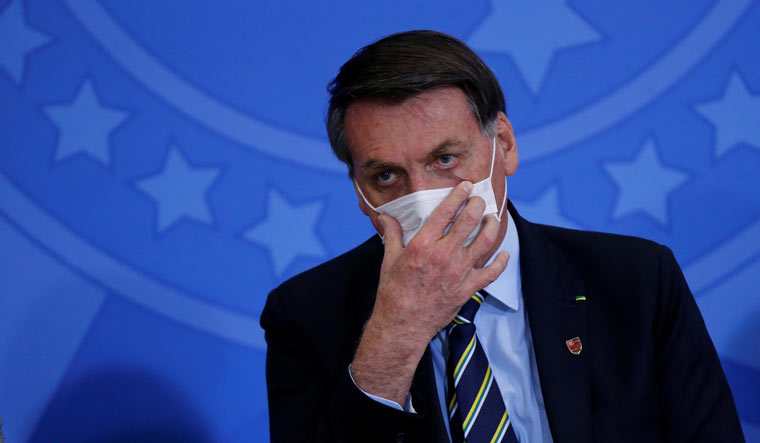The COVID-19 death toll in Brazil is now over 72,000 according to an ANI report. On Saturday, 39,000 new coronavirus cases were reported and 1,071 deaths. On Sunday, 630 COVID-19-related deaths were reported.
Since the beginning of the pandemic outbreak, over 1.23 million people have recovered from the coronavirus in Brazil.
Besides the disturbing numbers in Brazil, South America, it looks like, is the new epicentre of the coronavirus. So far, three South American leaders including Brazilian President Jair Bolsonaro who famously called COVID-19 a ‘flu’ has tested positive for the virus. On July 10, Bolivian interim president Jeanne Anez tested positive for the virus and prior to that Honduran President Juan Orlando tested positive.
As per a BBC report, in Brazil, one of the main reasons for the virus to spread is the millions of unregistered workers who depend on daily wages to provide for their families. Most of them prefer contracting the virus than make their families suffer from starvation.
Throughout the pandemic, Bolsonaro constantly downplayed the risk that the virus posed. On June 29, he had diluted mask-wearing regulations, besides having earlier urged regional governors to ease lockdowns.
Among the other Latin American nations, Peru has more than 3,26,000 confirmed cases of the virus and Chile has more than 3,15,000 confirmed cases. Medical experts from the Pan American Health Organisation say that these nations have not reached their peak of the pandemic yet. Also, COVID-19 numbers could be under-reported. As per a study by the University of São Paulo Medical School estimates the number of infections in Brazil could be up to six times higher than the official figure.
Argentina, Uruguay and Paraguay seem to be less-intensely hit by the virus. In Argentina, even as the country is facing political instability members from opposing political parties have managed to come together to impose rules for social distancing and mask-wearing.
Argentina has so far reported 100,166 cases of the coronavirus and 1,845 deaths. Uruguay has seen 987 confirmed cases of the virus and 31 deaths. Paraguay has so far seen 2,948 confirmed cases and 22 deaths.
So what makes Brazil different from these nations where the situation seems under control? A seeming unity among leaders, Marcia Castro, a global health professor at Harvard University, was quoted as saying in a BBC report. Bolsonaro had argued with state governors who wanted to impose lockdown measures and he pushed for the economy to be reopened as early as possible.
In Chile, the pandemic hit soon after protests due to social and economic inequalities last year. The government led by President Sebastian Pinera failed to take measures early on to reign-in the pandemic. Chile currently has 315,041 positive cases and 6,979 deaths.
The government in Chile also failed to provide materials like food and essentials that would make it easier for people to stay at home and survive the pandemic. The government also did not conduct as much testing nor insisted on the isolation of those who showed symptoms of the virus.
In Mexico, that has seen more than 299,750 positive cases and more than 35,000 deaths, President Manuel Lopez Obrador has prioritised reactivating the economy over enforcing strict lockdowns. Deputy Health Minister Hugo Lopez-Gatell, who’s leading the country’s response to the virus, was quoted in an AP report as saying, the disease’s impact in Mexico has been exacerbated by inequality and an overabundance of processed foods, which have contributed to illnesses that make COVID-19 even more deadly.
Mexico, like Brazil, has millions of daily wagers who depend solely on their pay to support their families. Similar to Brazil, a lot of them also live in hutment-type dwellings that do not let them follow social distancing.


